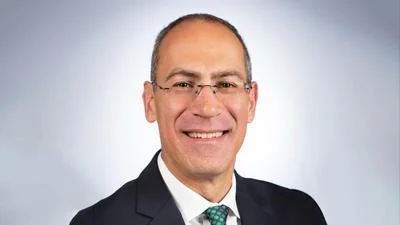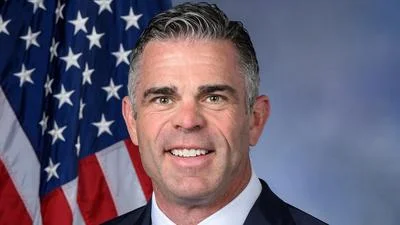Mike Gallagher | wikipedia.org
Mike Gallagher | wikipedia.org
Rep. Mike Gallagher (R-WI) led Republicans in Wisconsin's Congressional Delegation in demanding answers from the HHS, NIH, and CDC about a recently unveiled biosafety lab incident at UW-Madison. The incident, which potentially exposed individuals to a genetically engineered virus, raises serious questions about the requirements that the HHS, NIH, and CDC have in place and the basic processes for oversight and transparency at labs that engaged in risky gain-of-function research.
The letter, which was also signed by Senator Ron Johnson (R-WI) and Reps. Glenn Grothman (R-WI), Bryan Steil (R-WI), Tom Tiffany (R-WI), Scott Fitzgerald (R-WI), and Derrick Van Orden (R-WI), demands answers from the Directors of both the NIH and CDC, and from the Secretary of the HHS about these reported exposure incidents and the oversight procedures that the agencies have in place.
See the letter HERE or read full text below.
Dear Secretary Becerra, Director Walensky, and Acting Director Tabak:
One of the many impacts the COVID-19 pandemic has had is an increasing awareness of gain-of-function research—and specifically the Department of Health and Human Services’ (HHS) role in funding this research. A recent article has brought to light possible exposure incidents involving gain-of-function research which appears to have been funded by HHS at a University of Wisconsin-Madison (UW-Madison) lab led by virologist Dr.Yoshihiro Kawaoka. We write to request information on biosafety incidents at HHS-funded research institutions such as UW-Madison.
According to the article, between November 2013 and December 2019, at least two biosafety incidents involving H5N1 occurred at UW-Madison. The first, which occurred in November 2013, involved a researcher who pierced their finger with a needle contaminated with a modified version of H5N1. The CDC considered it a “serious exposure” and UW-Madison lab officials directed the researcher to quarantine for a week at home. According to the USA Today article, Dr. Kawaoka had previously “assured officials at NIH that the university had a designated quarantine apartment.” The article suggests that NIH subsequently learned that the university did not have a dedicated quarantine facility.
The USA Today article also described a December 9, 2019 incident involving three individuals working in Dr. Kawaoka’s laboratory collecting samples from ferrets possibly infected with an H5N1 influenza virus. During the sample collections they realized that the respirator hose providing safe air to a trainee disconnected, potentially exposing the researcher to H5N1. According to the article, this trainee was initially quarantined and later released after an unspecified amount of time.
According to the article, lab officials reported the incident immediately to the Centers for Disease Control and Prevention (CDC), and ten days later to program staff at the National Institutes of Allergy and Infectious Diseases.10 Two months later, UW-Madison filed a report with the National Institutes of Health (NIH) Office of Science Policy.
The report of these two researchers’ potential exposure to a genetically engineered virus and alleged failures to adequately address said exposures raises questions about HHS’s oversight of biosafety incidents. In order to better understand how HHS handles biosafety incidents at research institutions, we request the following information:
- A complete list of all biosafety incidents reported to HHS from January 1, 2013 to present, including a description of the type of incident that occurred, the date that said incident occurred, the institution where said incident occurred, and whether said incident led to infection.
- A copy of any reports submitted to HHS regarding the two biosafety incidents in Dr. Kawaoka’s lab that occurred in November 2013 and December 2019.
- For any research institution receiving HHS funds, a description of: a) The obligations to report actual or potential exposure to an infectious agent; b) The obligations to report actual or potential exposure to an infectious agent subject to either the 2014 moratorium on gain-of-function research; and c) The obligations to report actual or potential exposure to an Enhanced Potential Pandemic Pathogen;
- Does HHS require institutions to notify local and/or state health officials when an actual or potential exposure occurs? If so, please describe what notification is required.
- Does HHS provide guidance on what qualifies as an exposure, potential exposure, or non-exposure in the event of a biosafety incident? If so, please provide copies of said guidance.
- How often does HHS conduct inspections or audits of research facilities working with infectious agents? Please provide a list of each institution inspected or audited, including the date the most recent inspection or audit occurred and the rating or outcome of said audit or inspection.
Sincerely,
Issues: Health
Original source can be found here.





 Alerts Sign-up
Alerts Sign-up